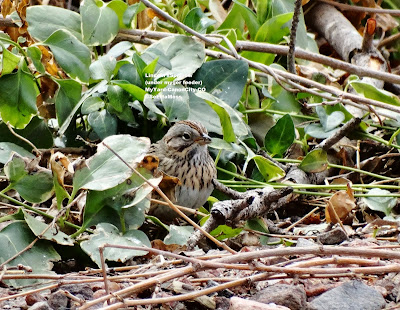Glossy Ibis, rarish visitor to Colorado

Today I found a small flock of about 25 White-faced Ibis, first of the year birds here, in a flooded agricultural field in Florence. I always check each dark ibis to look for the rarish Glossy Ibis, more likely found in eastern U.S., which I usually find in large flocks of around a hundred or so. Surprise, I found not just first of the year White-faced but Glossy Ibis. These photos show the bluish bare skin on it's face which are arranged as lines above and below the eye, and not going around the eye as with the bare skin on White-faced Ibis. Though the third photo just above is not as sharp, it is good for showing the difference in facial features of Glossy and White-faced Ibis right next to each other. The forth photo also shows the difference in these species though in a different perspective as they are loafing with heads resting on backs. The bottom pic shows the flock feeding in the flooded agricultural field. SeEtta



